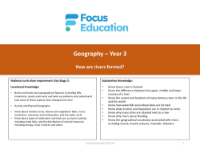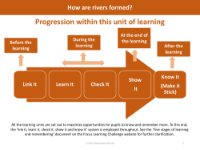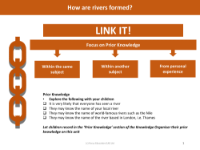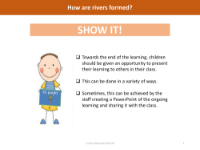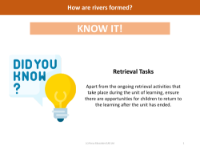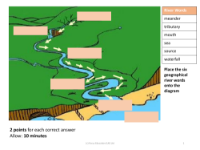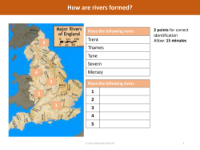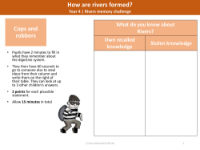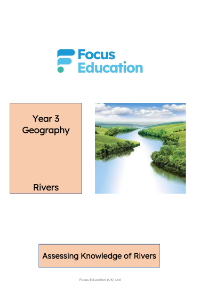Knowledge organiser - Rivers - Year 3
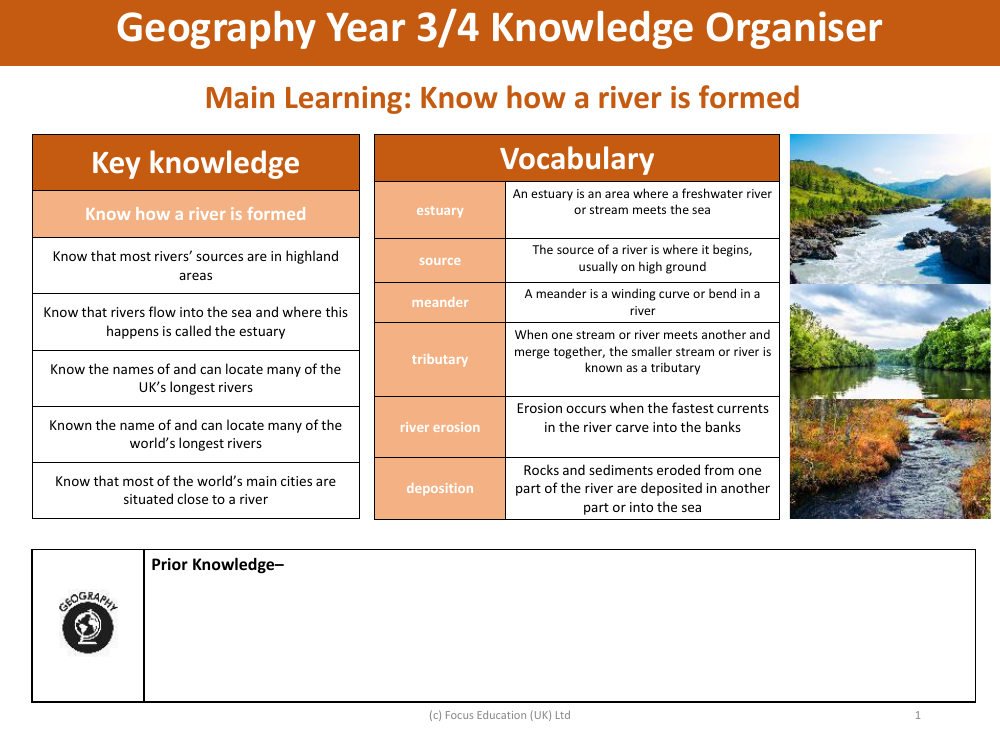
Geography Resource Description
In the Year 3 Geography curriculum, students are introduced to the fundamentals of rivers through a knowledge organiser that outlines essential vocabulary and key knowledge. The vocabulary section defines an 'estuary' as the area where a freshwater river or stream meets the sea. The 'source' is described as the starting point of a river, which is typically located on high ground. A 'meander' refers to the winding curves or bends found along a river's course. The term 'tributary' is used to describe a smaller stream or river that joins and merges with a larger one. 'River erosion' is the process by which the river's fastest currents wear away at the banks, while 'deposition' is the act of transporting and laying down eroded material from one part of the river to another, or into the sea.
The key knowledge section ensures that students understand how a river is formed and that the majority of river sources are found in highland areas. They learn that rivers flow into the sea, with the meeting point known as the estuary. Additionally, students are expected to know and locate many of the UK's longest rivers, as well as some of the world's longest rivers. An important geographical concept covered is that most major cities around the world are situated near rivers. This knowledge organiser sets the foundation for the main learning focus of the term, which is understanding the formation and features of rivers, as provided by Focus Education (UK) Ltd.
